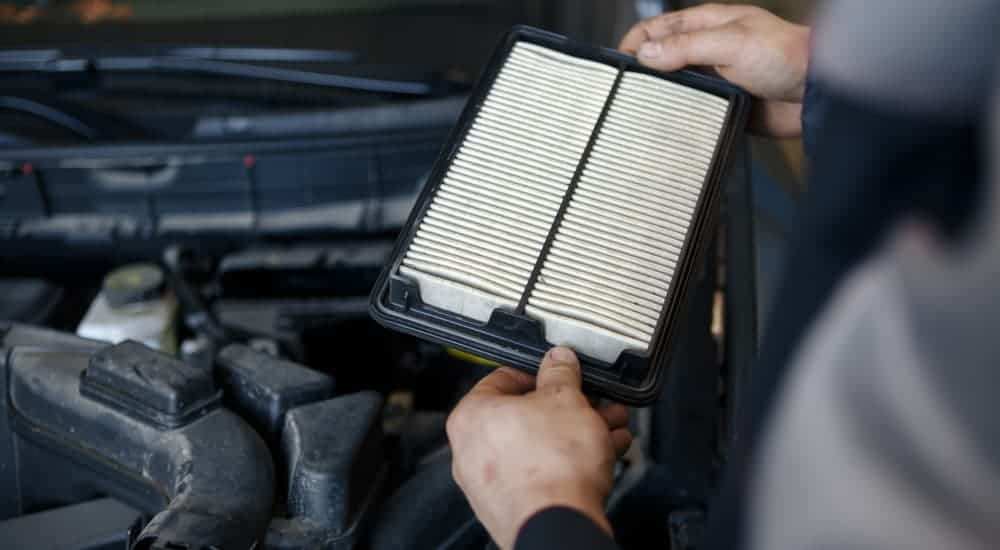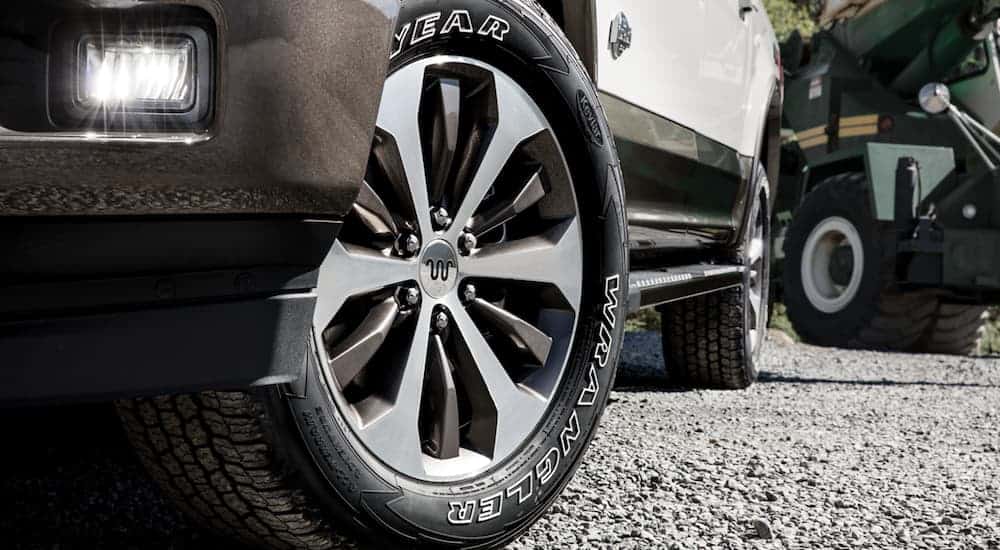Proper maintenance is key to keeping any vehicle in top running condition. But we all know that searching for “Ford service near me,” setting up an appointment, and spending a day without your F-150 can be a hassle, making it all too easy to put off minor maintenance items until it is time for something major. However, a simple solution to this is to do the work yourself. A lot of regular maintenance requires no special tools or knowledge and can be done in a matter of minutes in your driveway or garage. And not only will performing maintenance yourself save you time and money, but it will also give you a better idea of what condition your truck is in. So here are four easy do-it-yourself services for the Ford F-150 that you can do at any time to keep your truck running at its best.
#1 Check the Oil
It may seem too basic to mention, but getting into the habit of regularly checking the oil in your Ford F-150 is one of the easiest and most effective ways of keeping it running. Having plenty of good-quality oil is critical to reducing premature engine wear. And although your truck will alert you if oil gets to dangerously low levels, there is no reason for it ever to reach that point when you can check the oil level in a matter of seconds. However, there are a few tricks to making sure that you get a good reading.
First, make sure your truck is parked on level ground. If it is on a slope, then the dipstick might show the oil level as being higher or lower than it actually is. Second, you do not want the engine to be either too hot or too cold. Ford recommends running the engine until it reaches normal operating temperatures and then waiting 15 minutes for it to cool and the oil to settle. However, running the engine and then waiting to check the oil is a waste of gas and time. Instead, plan on checking the oil when you get home at the end of the day. Your return commute should get the engine temperature up, and by the time you have unpacked and changed into clothes you do not mind getting oil on, enough time will have probably passed to give you an accurate reading.
#2 Check the Air Filter

Almost as important as keeping your engine supplied with plenty of oil, is making sure that it has an unrestricted flow of clean air. If your engine ingests any debris, it can cause serious damage. And to prevent that, it is fitted with an air filter. However, as that filter intercepts debris, it will become clogged, restricting airflow and reducing engine performance. This is why it is crucial to make sure that your F-150 has a clean air filter.
Ford recommends replacing the air filter every 30,000 miles under normal conditions. But if you are driving off-road or in dusty environments, then that recommendation changes to “inspect frequently, service as required.” So do not be afraid to pop open your air filter and see what it looks like whenever you are under the hood.
However, if you own a Ford F-150 with a diesel engine, then this is even easier, and you will not even need to open up the air filter to check on it. On the front side of the air filter box in the engine compartment, you will see a protruding air filter restriction gauge. This handy feature is designed to tell you how much effort your engine is taking to pull fresh air through the air filter. The more clogged your filter is, the higher the value recorded on the gauge will be. If the gauge is reading in the red, then it is time to replace your filter.
Ford recommends checking the air filter restriction gauge every time you open up the hood and at least every 7,500 miles under normal driving conditions. But if you are regularly driving through heavy dust, then the recommended schedule increases to a check every 500 miles or two weeks. Ford also suggests that if you drive through heavy snow or rain, you reset the air filter restriction gauge after either clearing off the snow or letting the air filter dry out.
#3 Clean Your Engine
Everyone loves a clean truck, and most people will occasionally wash down their vehicles and clean out the cabin and bed. However, few people realize that you should be cleaning under the hood as well. Not only will this fight rust, but dirt and grease on the engine can reduce cooling and result in decreased performance. But there are some important things to know before you start scrubbing.
The first is that although your engine is waterproof against anything it will generally encounter, high-pressure hoses can be more than it can handle. So be gentle and use some elbow grease rather than just blasting away with a pressure washer. Second, do not wash a hot engine with cold water. Doing this can actually crack your engine block, and if the engine is still running, it can even ingest water and cause internal damage. So make sure to turn your truck off and give it some time to cool down. This is especially important in colder weather.
If your F-150 is one of the models that comes with a plastic engine cover, remove this before you start cleaning. No tools are needed, just be careful not to break any of the snaps holding it on. Ford also recommends covering the battery, air filter, and power distribution box to prevent any water damage to those more sensitive engine components. Finally, avoid directly washing the spark plugs and wires. If you take those basic precautions, you will soon have a cleaner and cooler engine. To make the task easier, you can also pick up a degreaser – Ford recommends Motorcraft Engine Shampoo.
#4 Check Your Tires

Your tires are one of the most critical parts of your truck, and if they are in poor condition, vehicle performance will be severely degraded. There are two main things you want to check for when examining your tires: tread wear and proper inflation. All tires have an expected life span and should be immediately replaced when they have reached the end of it. While tires do degrade with age and you should consider replacing tires after six years, most tires will wear out before they become too old. If you are unsure how old a tire is, then look for a line of numbers on the sidewall beginning with the letters “DOT,” the last four digits will be the week and year that it was manufactured.
There are two ways of measuring tread wear. The more traditional method is to stick a penny into the tread upside down, and if the tread does not touch Lincoln’s head, the tire should be replaced. However, almost all modern tires come with built-in wear gauges. Look for a raised line of rubber in the treads; if it is flush with the top of the tread, then the tires are worn out and should be replaced. It should also be remembered that tire performance is reduced even before they are officially worn out, so be proactive and replace your tires before they fail either of these tests. Tire inflation is also important to check for several reasons. A properly inflated tire will have better performance and better fuel economy than an improperly inflated tire while also lasting longer. So staying on top of tire inflation is important.
Stay On Top of Maintenance
Overall, staying on top of maintenance for your F-150 is essential. However, you do not need to visit the shop whenever you need this maintenance done. You can check your oil and air filter, clean your engine and check your tires all on your own. Just follow the directions we gave you here today!

